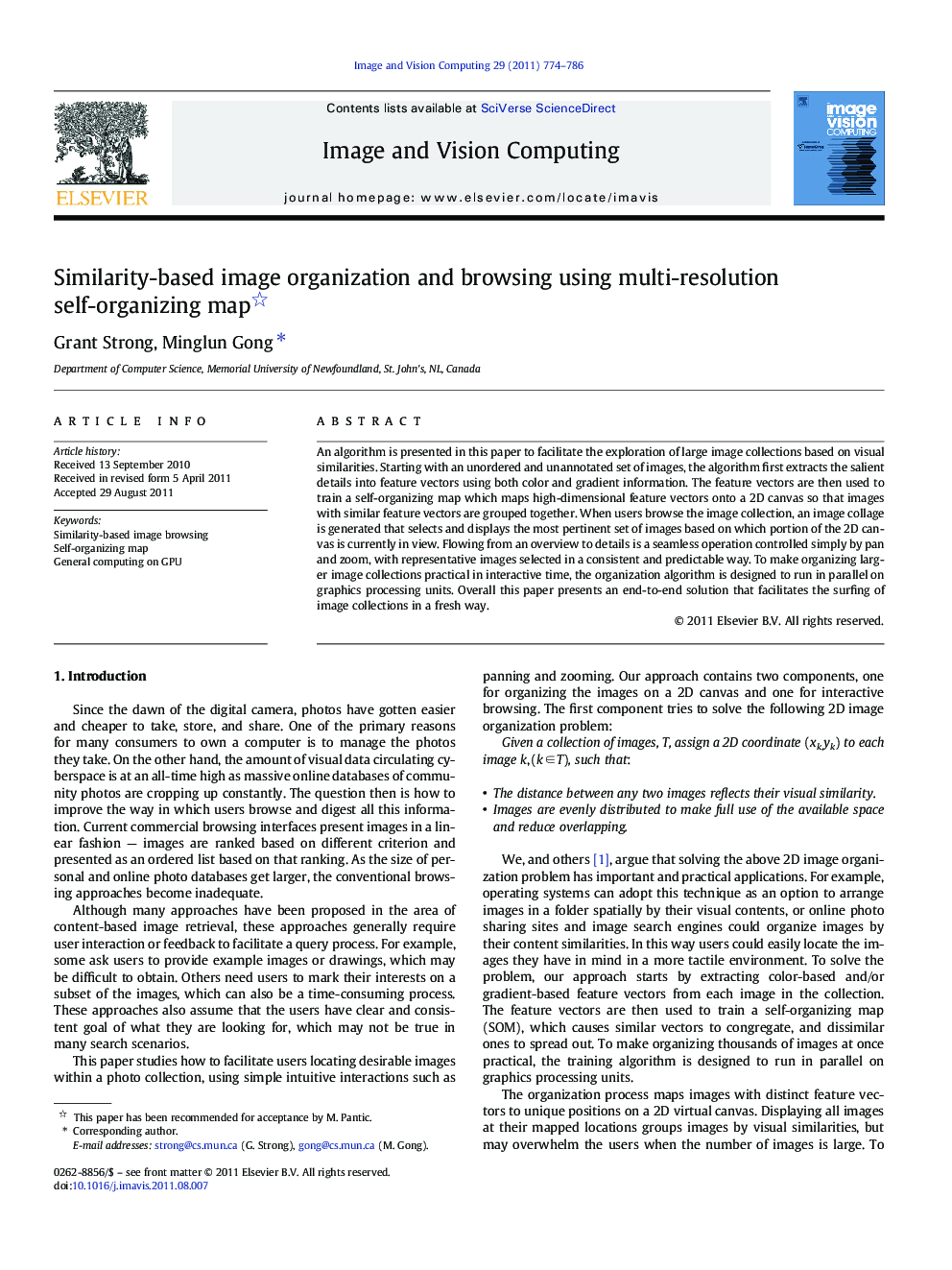| Article ID | Journal | Published Year | Pages | File Type |
|---|---|---|---|---|
| 526804 | Image and Vision Computing | 2011 | 13 Pages |
An algorithm is presented in this paper to facilitate the exploration of large image collections based on visual similarities. Starting with an unordered and unannotated set of images, the algorithm first extracts the salient details into feature vectors using both color and gradient information. The feature vectors are then used to train a self-organizing map which maps high-dimensional feature vectors onto a 2D canvas so that images with similar feature vectors are grouped together. When users browse the image collection, an image collage is generated that selects and displays the most pertinent set of images based on which portion of the 2D canvas is currently in view. Flowing from an overview to details is a seamless operation controlled simply by pan and zoom, with representative images selected in a consistent and predictable way. To make organizing larger image collections practical in interactive time, the organization algorithm is designed to run in parallel on graphics processing units. Overall this paper presents an end-to-end solution that facilitates the surfing of image collections in a fresh way.
Graphical abstractThe results of organizing a collection of 2247 images.Figure optionsDownload full-size imageDownload high-quality image (524 K)Download as PowerPoint slideResearch Highlights► Present a GPU-based SOM training algorithm for organizing images Interactively. ► Provide an intuitive way of browsing a large image set within limited screen space. ► Propose a measure for quantitatively evaluating the 2D image organization results ► Qualitatively and quantitatively compare SOM with other dimension reduction methods .
